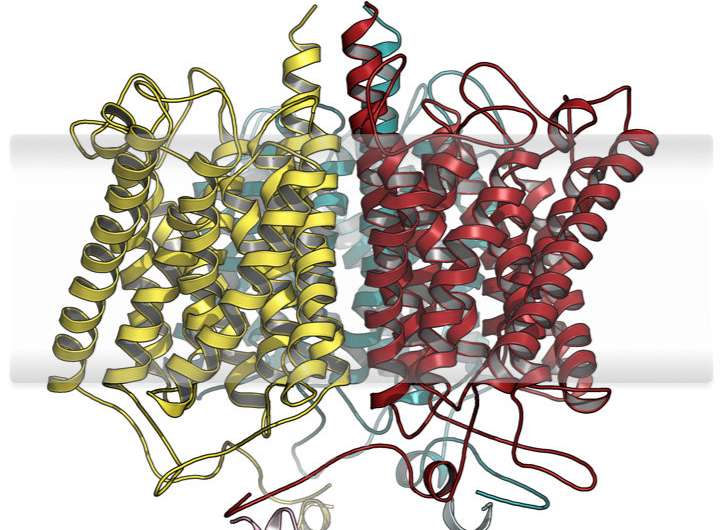Biochemists show how evolution combines a nutrient sensor from existing elements

A team led by the Freiburg biochemist Prof. Dr. Susana Andrade has characterized a protein that enables certain microorganisms to recognize and absorb ammonium in their environment. Ammonium is considered a toxin that pollutes ecosystems—but for these bacteria it represents an important nutrient and energy source. The researchers have published their findings in the scientific journal Nature Communications.
The element nitrogen is an indispensable building block of all biomolecules and therefore of great importance to all organisms. In addition, some members of the microbial community have specialized in using various nitrogen compounds as energy source for optimal growth. This is especially the case amongst anaerobic ammonium oxidizers: These bacteria do not require oxygen for their metabolism but instead, convert two important nitrogen compounds, ammonium and nitrite, into nitrogen gas, which accounts for about 80 percent of the earth's atmosphere. Through this reaction, these microorganisms play an important role in the detoxification of nitrogen compounds that are increasingly released into the environment through the use of fertilizers.
Andrade and her team from the Faculty of Chemistry and Pharmacy at the University of Freiburg have identified an unusual protein in such bacteria: Half of it resembles known transport proteins for ammonium ions and the other half belongs to a group of signal transducing proteins. This led to the suspicion that two building blocks, already existing in nature, had been combined in a modular way to enable a completely new functionality: the detection of ammonium from the environment and subsequent transmission of this information to the cellular signaling networks.
The researchers undertook a comprehensive functional and structural characterization of this novel protein, which also involved working groups from the University Medical Center Freiburg; Radboud University in Nijmegen, The Netherlands; the Russian Academy of Sciences; and the European Molecular Biology Laboratory (EMBL) in Hamburg. As a result, the original assumption was confirmed: Based on a highly selective ammonium transport protein, evolution has given rise to a new recognition site for the ions, whose occupation leads to conformational changes that are passed on to the signal transducing module. This direct modular coupling offers the prospect of fusing other signal transduction units to the ammonium sensor module to engineer new cellular functionalities.
More information: Tobias Pflüger et al. Signaling ammonium across membranes through an ammonium sensor histidine kinase, Nature Communications (2018). DOI: 10.1038/s41467-017-02637-3
Journal information: Nature Communications
Provided by Albert Ludwigs University of Freiburg



















